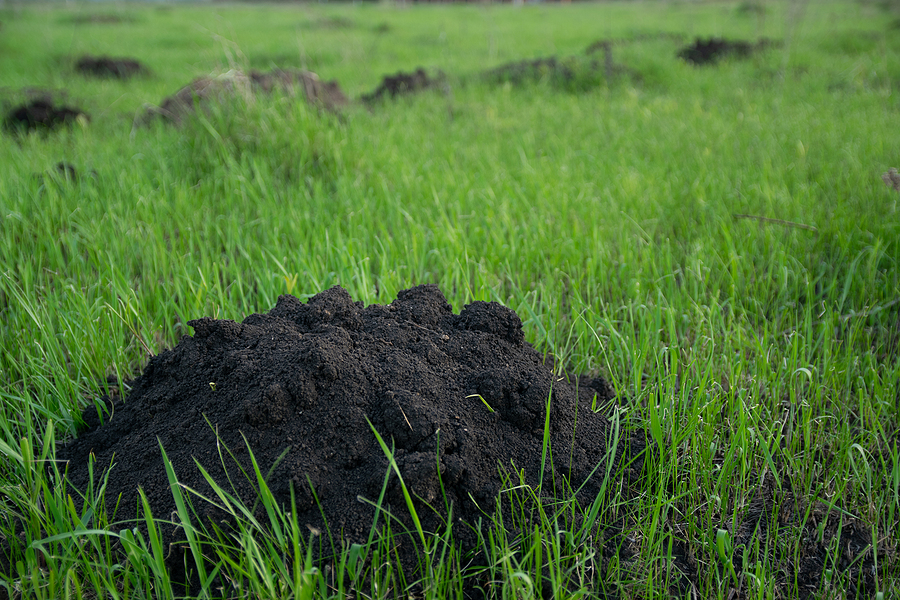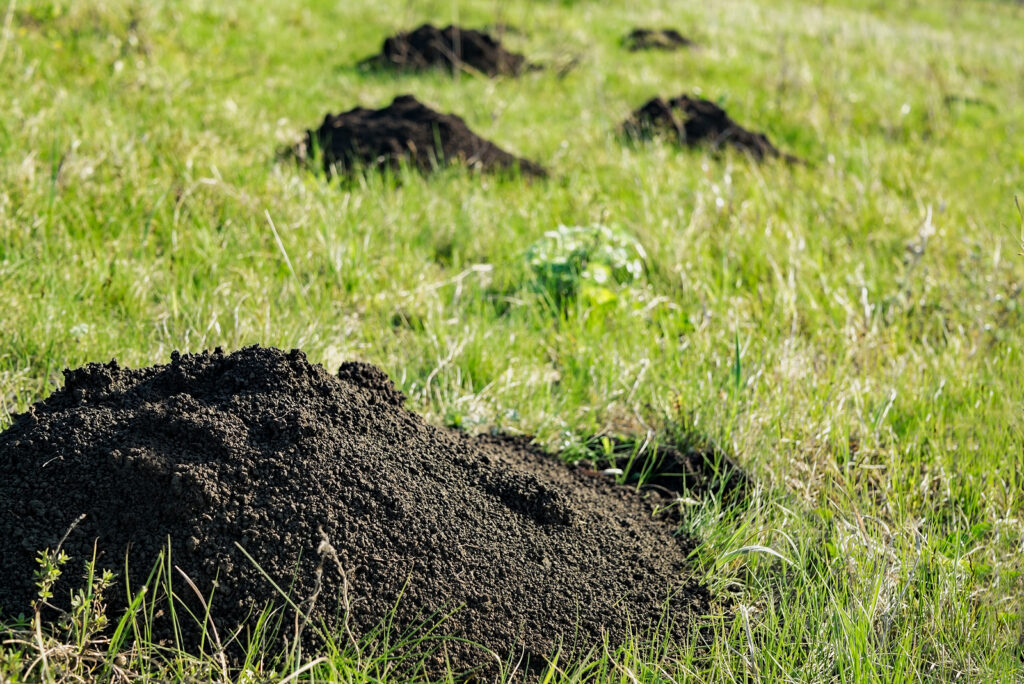If you’re a proud homeowner who cherishes a perfectly manicured lawn, you’re likely no stranger to the annoyance that molehills can cause. These unsightly piles of dirt, result of intricate mole tunnels beneath your beloved green space, can transform your pristine lawn into a hilly, muddled battlefield overnight.
In this blog post, we will explore the root cause of these frustrating mounds and delve into effective mole control strategies. So, worry no more, as we guide you on the path to reclaim your picture-perfect lawn, keeping it free from the pervading presence of molehills.

What Are Molehills?
Molehills, or mole holes, are the raised mounds of dirt caused by yard moles tunneling underneath your lawn and gardens. Moles are small species of mammals often found in grassy and moist areas. They burrow through soil creating elaborate underground passageways in search of food, such as insects, worms, and larvae. As they move, they push dirt upward, creating shallow mounds on the surface of your lawn. While it might be tempting to fill in these mole hills with soil, if done incorrectly, it would only encourage more moles to move in and create even more mounds!
How Do I Repair Mole Damage in the Yard?
The best way to repair mole damage in your yard is to put in some good, old-fashioned elbow grease. After all, you don’t want to walk out onto your once-beautiful lawn and feel your heart sink as you see mounds of earth scattered throughout. Unfortunately, these mole hills are a tell-tale sign of yard moles tunneling under your grass, causing significant damage to your lawn. But don’t worry! You can restore your lawn to its former glory with a bit of lawn repair. There are several effective strategies for dealing with mole damage, from removing the moles themselves to planting grass seed.
Here are a few approaches:
Compact the soil around mole entrances for a short-term repair job; this increases the difficulty of entry and discourages further excavation.
For a more long-term plan, over-seed grass right on top of weed seeds; doing so consumes local weed propagation and releases grass fibers which discourage future underground activity.
Plant spices such caper spurge (Euphorbia lathyris) in year to keep areas inaccessible at great risk to moles’ health.
Physical traps may be used if large slices of the landscape’s green are being taken away in a hurry promising better success than using repellents. But only professionals should set and manage mole traps.
Effective Animal Removal and Control Methods for Yard Moles
The best way to control moles is through professional wildlife removal and control. Traps are a popular method for professionals, as they are relatively easy to set up and require minimal effort once the trap has been set. These traps come in several varieties, from wire mesh traps to scissor and body-grip traps.
Environmental modification is also necessary for yard mole removal. In fact, it is the only way to completely rid your yard of these pesky critters, as it eliminates their source of food and makes it virtually impossible for them to dig further tunnels in your lawn.
Chemical repellents are another option for mole control, as they can drastically reduce mole activity in your yard over time. These solutions are usually applied directly to the mounds or tunnels of the moles, so they must be reapplied regularly for the best results.
Lastly, an integrated approach to animal control is often the most effective way to keep moles away from your lawn over a long period of time. This includes regularly scouting for molehills and tunnels, monitoring food sources such as grubs, and using a combination of traps and repellents when necessary.
Conclusion
No matter which approach to critter control that you choose for dealing with your mole problem, the most important thing is to act quickly and not let the issue linger. The longer you wait, the more damage they will do to your lawn, so it’s best to be proactive about getting rid of them as soon as possible. With a bit of effort and patience, you can reclaim your perfect lawn in no time!
Are you at your wit’s end trying to figure out how to get rid of yard moles? You can stop worrying now. Contact Budget Animal Removal at 615-337-9165 for TWRA licensed and insured Nashville, Tennessee animal removal for animal moles and more. We serve commercial clients too.
Related Posts:
The 3 Most Common Yard Mole Species in the United States
What to Do About a Yard Mole Outbreak
Common Household Ingredients That Will Repel Nuisance Wildlife


